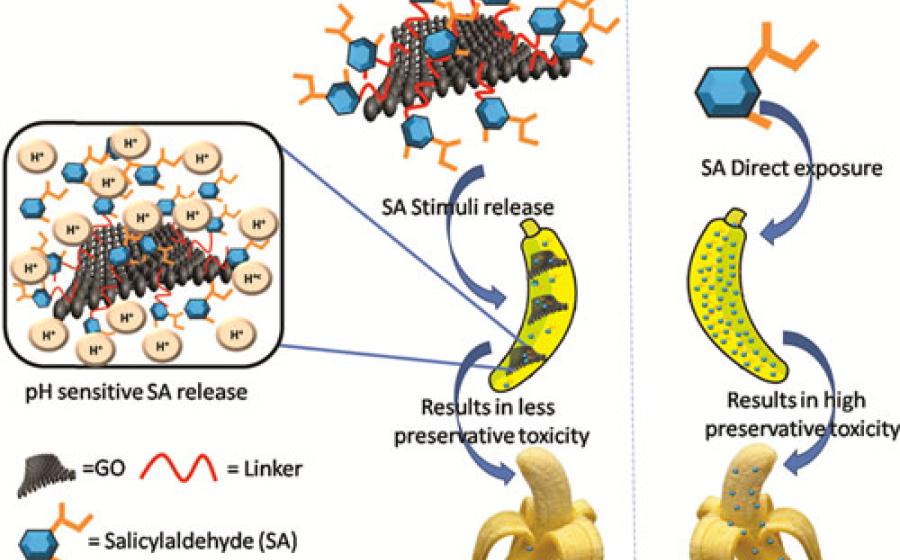
FAO, the Food and Agriculture Organization of the United Nations, estimates the yearly global post-harvest food loss and waste by quantity at roughly 30-50 percent of cereals, crops, fruits and vegetables, meat, fish and dairy products. At the same time, there are an increasing number of reports that indicate that the consumption of some food preservatives could cause health problems. Therefore, an ideal preservative should meet three main criteria: to control ripening; to have antimicrobial activity; and finally, the preservative should not be directly in touch with the fruit but should be made available on demand. Addressing this issue, nanotechnology researchers in India have developed a packaging material that meets the above three criteria.
In their work, the team demonstrates fruit preservative delivery from the nanopacking in response to the signal from the fruit stimuli. They chose graphene oxide (GO) as an inert platform with a very high surface area to accommodate maximum preservative. They loaded this platform with the model preservative salicylaldehyde. In addition, the surface area of GO can complement in ethylene sequestration, which has been the primary signal from the ripening fruits and in cold stress, to induce oxidation.
Picture description - In this study, acid synthesized in the overripe fruits was envisaged to cleave acid labile hydrazone to release preservative salicylaldehyde from graphene oxide (GO). To maximize loading and to overcome the challenge of GO reduction by hydrazine, two-step activation with ethylenediamine and 4-nitrophenyl chloroformate respectively, are followed. The final composite shows efficient preservative release with the stimuli of the overripe fruit juice and improves the fruit shelf life.



